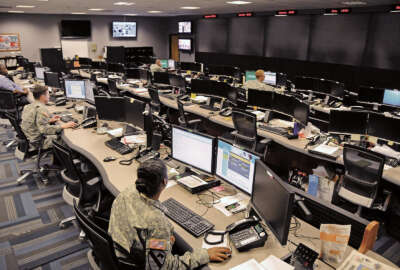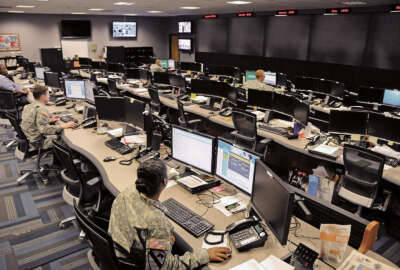Army targets mission command data as it refines data stewardship roles
“Mission command data of how you actually do C2 on the battlefield has no clear leader,” said David Markowitz.
As the U.S. Army is refining data stewardship practices by clearly defining who is responsible for the management of data across the service, the current focus is on mission command data as no single entity within the Army has clear ownership over that data.
In April, Army Chief Information Officer Leonel Garciga issued the “Army Data Stewardship Roles and Responsibilities” memo, formalizing data management roles and responsibilities across the Army, so there’s “no questions of who does what — it’s you,” said David Markowitz, the Army’s chief data and analytics officer.
Assigning data stewardship has been pretty straightforward and intuitive for some areas within the Army. For instance, the Army G-1 — the service’s personnel branch responsible for developing and implementing policies and programs to build personnel readiness, is the data steward for human resources data.
“We want to put people in charge that were naturally kind of in charge but didn’t really know it. We’re now going to make them more fully aware of their full scope of responsibilities,” said Markowitz.
“The Army G-1 is the data steward for human resource problems. Of course, they are. If there’s an issue with the [Integrated Personnel and Pay System – Army] to make sure it’s got the right information coming in, who do you go to? You go to the G-1.”
Similarly, the Army Cyber Command owns all aspects of cyber operations — from the forces that do it to the decision-making process and data collection — it’s a natural fit for them to also be the data stewards for defensive cyber data.
“Getting that clarity actually gets speed. Speed is what we want to get answers very quickly within that decision cycle and get someone who has the authority to actually make a decision that the rest of the Army will listen to is kind of the key aspect of data stewardship, which makes it super hard in the warfighting area,” said Markowitz.
Managing mission command data is a lot less straightforward since it’s so fragmented and involves multiple stakeholders. “Mission command data of how you actually do C2 on the battlefield has no clear leader,” said Markowitz.
Entities involved in mission command data management range from units on the ground that generate and use C2 data to program executive offices that are responsible for developing the systems that handle mission command data.
At the same time, the Training and Doctrine Command (TRADOC) is responsible for developing the Army’s doctrine — essentially the rules, guidelines, and strategies for how the Army conducts operations, including mission command. And the Army Futures Command (AFC) focuses on future warfare concepts and capabilities, including how the Army should use mission command data in future conflicts.
“You can kind of see TRADOC or AFC may be part of data design, but if you look at lifecycle management of data, they’re not the source for all aspects of lifecycle management. They don’t run anything. They actually don’t run any system. Do they really own the technical design, or does the [program manager] when they actually build something or an industry partner right as it comes back? Who is it?” said Markowitz.
“Part of our goal right now is really focusing on a C2 next and try to link it better. Who’s doing the design, who’s doing the implementation, who’s going to run it?”
The Army’s recent experience with the 18th Airborne Corps is a compelling use case of how mission command data is managed in practice, said Markowitz.
Deployed to the U.S. European Command (EUCOM) theater, the 18th Airborne Corps was tasked with setting up C2 conditions on the ground — they had to quickly develop mission command software and tools to support their operations. The Corps leveraged their experience from Scarlet Dragon — a series of exercises designed to test and advance the integration of data, artificial intelligence and emerging technologies to improve decision-making processes.
Now, as the 18th Airborne Corps prepares to leave, the Army faces the challenge of determining who will take over and maintain the systems they developed.
Markowitz said the Army had a permanent unit handle some of those transitions, but if the service had to rotate another corps into Europe to take over C2 responsibilities, it is unclear who would manage all the moving parts.
“For those kinds of experiences in Afghanistan and Iraq, we had months to do rotational moves. In modern war, you don’t have that luxury. You got to go within hours and set those conditions, hopefully in minutes, not days or months. That’s the challenge,” said Markowitz.
Copyright © 2025 Federal News Network. All rights reserved. This website is not intended for users located within the European Economic Area.






